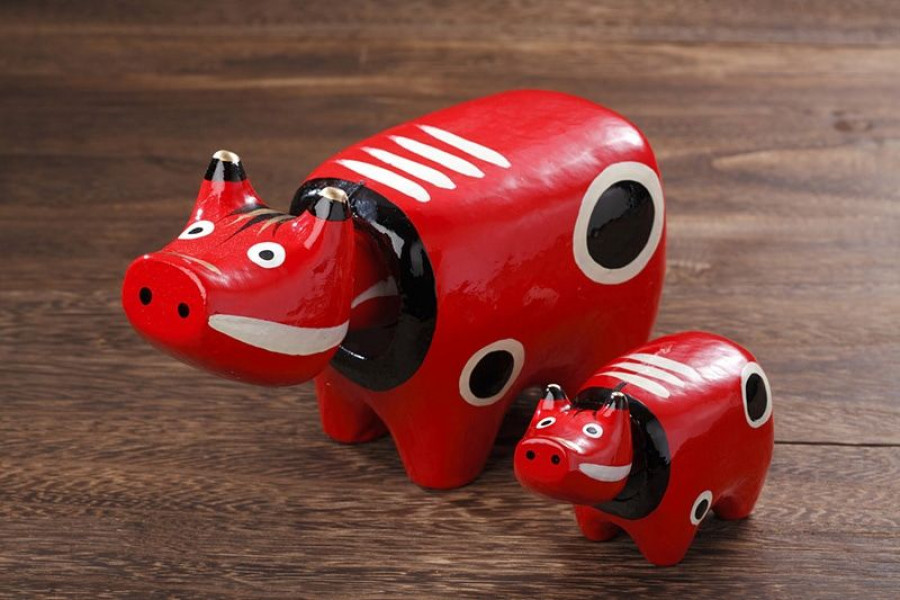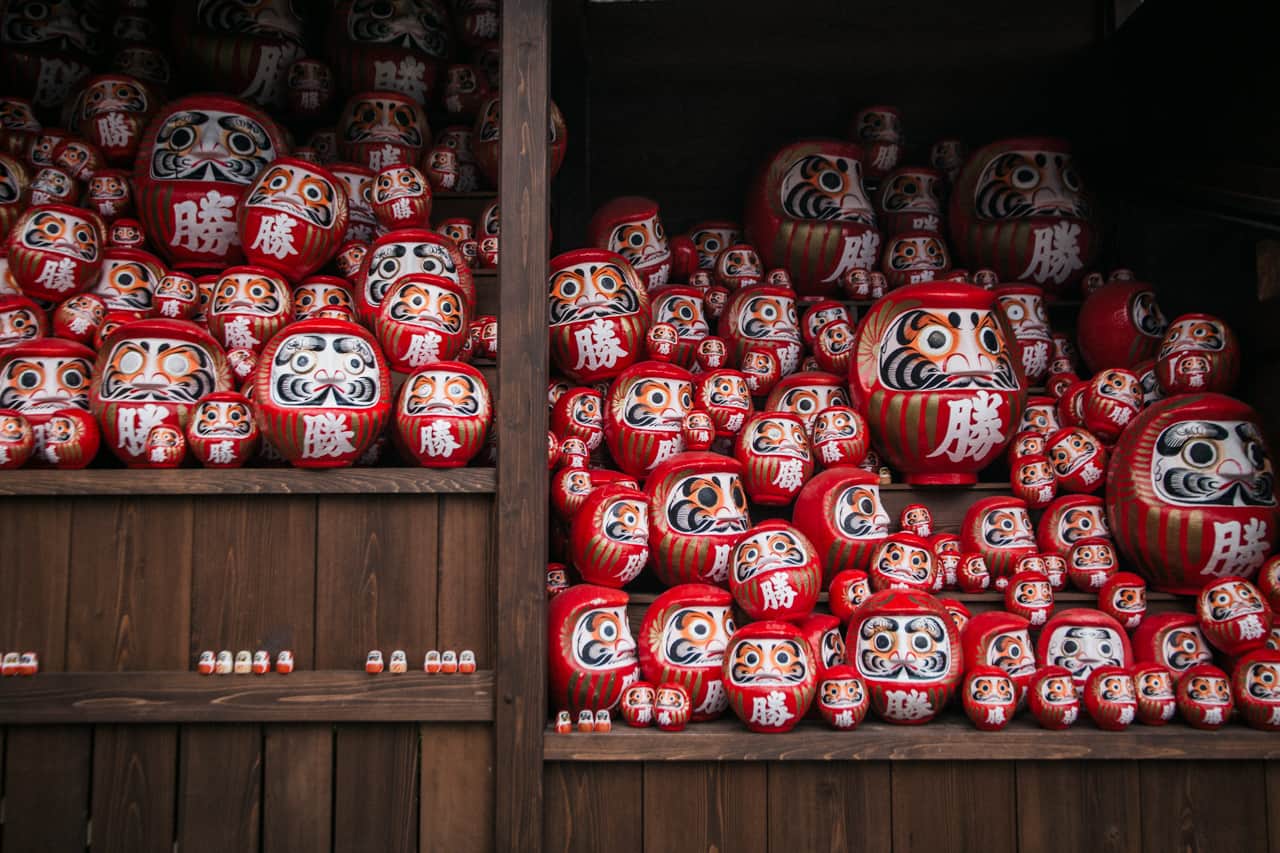Traditional Japanese folk toys, or kyōdo-gangu (郷土玩具), are little handmade dolls and figurines that were particularly popular during the Edo period (1603-1868) and Meiji Era (1868-1912). Originally created for play, many of them symbolise good fortune, health and other wishes for children, and are still popular talismans, souvenirs or home decorations to this day.
Mostly crafted out of clay, wood and papier-mache (hariko), Japanese folk toys can be a more sustainable alternative to modern plastic toys. Each is handcrafted by skilled artisans and differ in style due to regional variations.
Read on to learn more about some of the more iconic Japanese folk toys.

Aka-beko (赤べこ)
Paper aka-beko pay homage to a Fukushima Prefecture legend where red cows came to rescue and rebuild the Enzoji Temple in Yanaizu, after a devastating earthquake. Red figurines and objects were also believed to ward off ill health.

Inu-hariko (犬張子)
This papier-mache dog carrying a spinning drum originated in Tokyo and is a popular charm for expectant mothers, as it's believed that dogs who give birth to a large litter represent healthy childbearing.

Kokeshi (こけし)
Hailing from Japan's northeastern region of Tōhoku, the dolls are hand-carved by kokeshi masters using dogwood, cherry wood and sometimes Japanese maple wood. Fun fact – kokeshi dolls may all look similar at first glance, but there are 12 styles of doll across Tohoku’s six prefectures, with different shapes and features. Read more here.

Daruma (だるま)
Finally, this iconic, round, red and white doll made from papier-mache represents good luck and persverance, and is a common sight at Japanese temples. The eyes are often blank to allow people to fill in one eye when they set a personal goal, and the other when their goal is complete. In Niigata Prefecture, you'll even find sankaku-daruma (triangular daruma)!
Images (top to bottom): Fukushima Travel, Time Out Japan, tsunagu Japan, Voyapon, Sumally.
